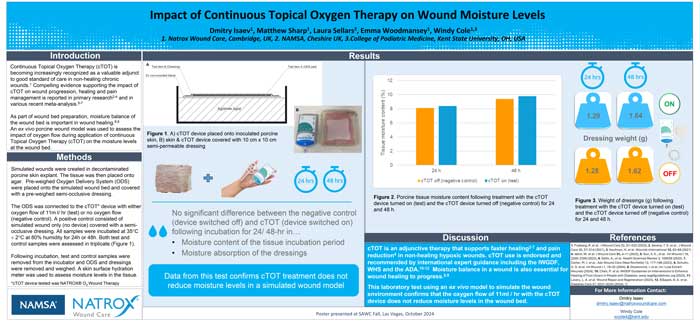Impact of Continuous Topical Oxygen Therapy on Wound Moisture Levels

Introduction
Continuous Topical Oxygen Therapy (cTOT) is becoming increasingly recognized as a valuable adjunct to good standard of care in non-healing chronic wounds. Compelling evidence supporting the impact of cTOT on wound progression, healing, and pain management is reported in primary research and in various recent meta-analyses. As part of wound bed preparation, moisture balance of the wound bed is important in wound healing. An ex vivo porcine wound model was used to assess the impact of oxygen flow during the application of continuous Topical Oxygen Therapy (cTOT) on the moisture levels at the wound bed.
Results
- No significant difference between negative control and cTOT in the moisture content of the tissue or absorption of the dressings
- Results were consistent following incubation for both 24 and 48 hours
Discussion
cTOT is an adjunctive therapy that supports faster healing and pain reduction in non-healing hypoxic wounds. cTOT use is endorsed and recommended by international expert guidance including the IWGDF, WHS, and the ADA. Moisture balance in a wound is also essential for wound healing to progress. This laboratory test using an ex vivo model to simulate the wound environment confirms that the oxygen flow of 11ml / hr with the cTOT device does not reduce moisture levels in the wound bed.
Authors:
Dmitry Isaev; Matthew Sharp; Laura Sellars; Emma Woodmansey, PhD; Windy Cole, DPM